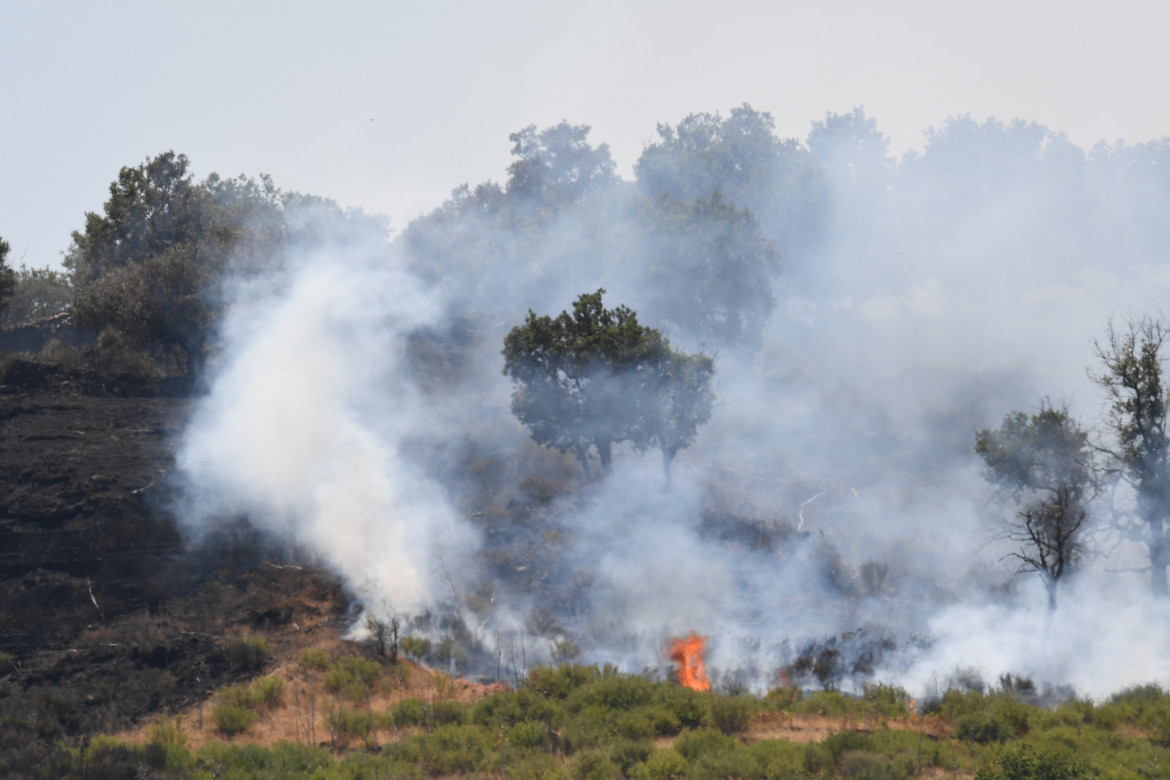Report
Fires are destroying Italian green spaces, and it’s becoming more frequent
In 2021, 60% of Sicilian municipalities (out of a total of 235 municipalities) were affected by fires. Italy is burning, releasing massive carbon reservoirs into the atmosphere.

Between January 1 and December 31, 2021, a total of 0.5% of Italy’s land area burned down, an area the size of Lake Garda. The wave of fires last year affected three times as many hectares as in 2020, especially in the south of Italy, according to data from ISPRA released on Friday, at the same time as the publication in the journal Scientific Reports of a study showing an unprecedented increase in the risk of fires throughout Europe, and in particular in the Mediterranean area, caused by climate change.
The research, compiled by a team led by the University of Barcelona and with major Italian contributions from the University of Salento and ESRIN, the European Earth Observation Center of the European Space Agency (ESA) in Frascati, underscores the urgency of adopting effective forest management strategies to reduce these risks and avoid jeopardizing European forest-based decarbonization strategies.
The areas most at risk are the forests and mountain areas of central and southern Europe, which are also large carbon reservoirs that the fires threaten to release into the atmosphere: the Pyrenees, the Iberian mountain range and the Cordillera Cantabrica, but also the French Massif Central, the Alps and Apennines, the Carpathians, the Balkan Mountains and the Ponto-Caucasian region. The conclusions of the study, which also calculated fire risk trends up to 2100, suggest that the risk could increase further in these regions, which will be most affected by climate change.
The ISPRA analysis also highlights the complex link between types of climate change in Italy: not only the direct effects of prolonged drought and high temperatures should be considered, but also the effects of climate on insects and plant diseases, which make them more vulnerable and thus make tree canopies even more susceptible to fire. The repercussions and damage to forest ecosystems caused by fire can accelerate the processes of biodiversity loss, carbon dioxide release, increased hydrogeological risk, soil erosion and dust pollution of the air and water bodies.
From an ecological point of view, forests have an innate resilience to the effects of fires, but when these phenomena become extensive and frequent, they can result in long-term damage and permanent loss of forest area. Analysis of the past two decades shows that in Italy, 40-50% of the land affected by fire is forest. Among the types of tree cover, the most affected category is evergreen broadleaf trees (Mediterranean scrub) at 56%, followed by deciduous broadleaf trees (such as oaks) at 25% and evergreen needlewood species, such as Mediterranean pines, at 19%.
In 2021, Sicily appears to be the region with the largest portions of burned areas, about 3.5% of the total regional area. Sixty percent of Sicilian municipalities (out of a total of 235 municipalities) were affected by fires. The second region was Calabria, accounting for 2.4% of its area, with 240 municipalities affected.
The region with the greatest impact in terms of burned forest area in 2021 was Calabria: the total area of forest affected by fire compared to the total area burned was 37%. During the summer season of 2021, for example, in the Aspromonte National Park, about 10% of the park’s forested area went up in smoke.
“The event,” ISPRA adds in a note, “was of great environmental impact because the fire attacked two ancient forests: the Faggeta di Valle Infernale (a UNESCO World Heritage Site) and the Bosco di Acatti, both of which are preserved within the protected area.”
Then, the Sardinia region was the third most affected in terms of forest areas burned. There were just 40 fire events (compared, for example, to about 500 in Sicily), but they included the largest one in Italy, involving 10 municipalities in Montiferru. In the municipality of Sennariolo, in the Oristano area, the fire affected 94% of the total municipal area.
As of the time of writing this article, attempts are still underway to extinguish a fire which developed in an area of the Bolognese Apennines, near Vergato, in some woods in the Carbona hamlet. The Emilia-Romagna Region said that 29 people have been evacuated “as a precautionary measure.”
These are the direct effects of extreme events and climate change, from whose consequences Italy is not exempt.
Originally published at https://ilmanifesto.it/ogni-anno-brucia-unarea-verde-pari-al-lago-di-garda on 2022-07-02
